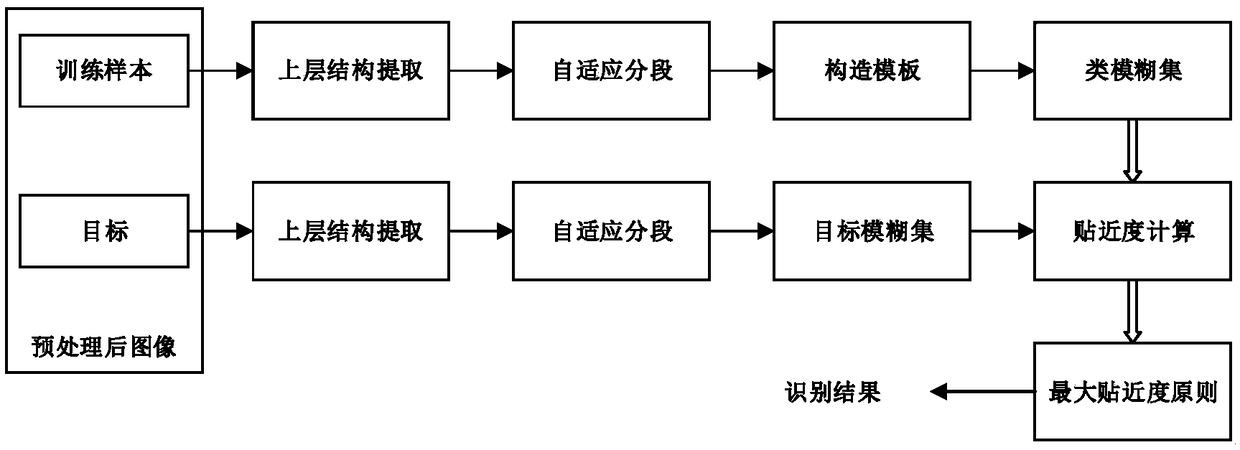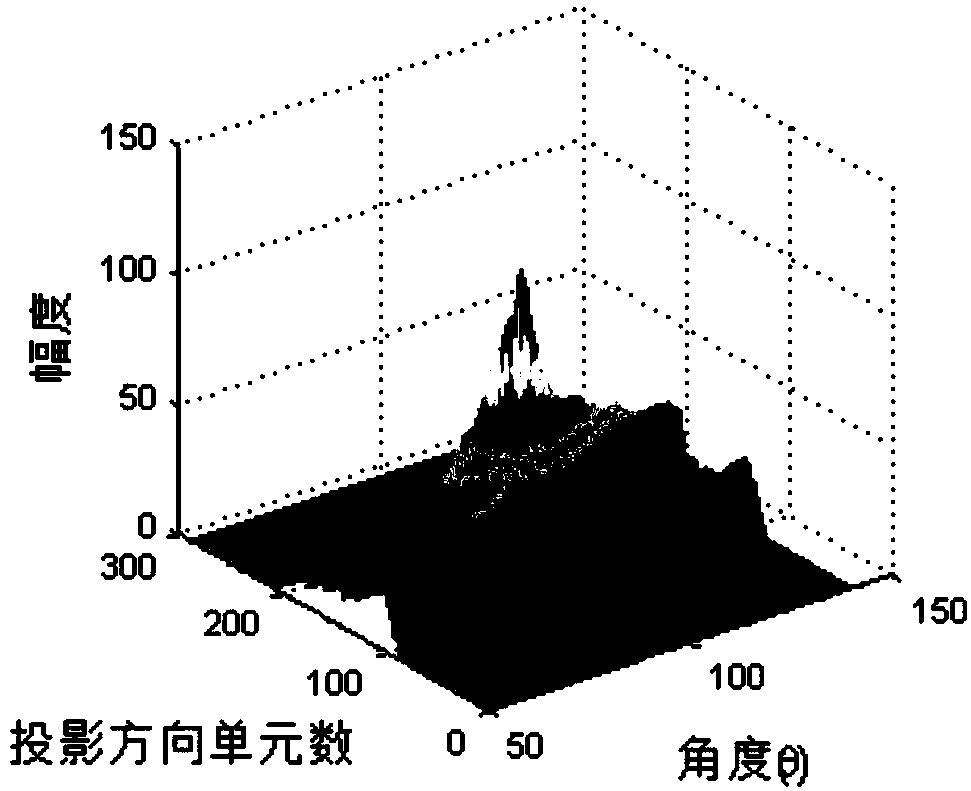A fuzzy recognition method of ship target based on isar image
A technology of fuzzy recognition and target classification, applied in character and pattern recognition, instruments, calculations, etc., can solve the problems of mean value and coding error, insufficient description of superstructure curve, low recognition accuracy, etc., and achieve stable mean value, The segmentation results are reasonable and the recognition effect is improved
- Summary
- Abstract
- Description
- Claims
- Application Information
AI Technical Summary
Problems solved by technology
Method used
Image
Examples
specific Embodiment approach 1
[0035] Specific implementation mode one: combine figure 1 Describe this embodiment, a kind of ship target fuzzy recognition method based on ISAR image of this embodiment, specifically prepare according to the following steps:
[0036] Step 1, adopt Radon transformation (Radon transformation), extract Centreline (center line) to target ISAR image (inverse synthetic aperture radar), and extract superstructure curve;
[0037] Step 2, using the mean gradient method to adaptively segment the extracted superstructure curve, and calculate the segmented relative mean feature after segmenting;
[0038] Step 3, using training samples to estimate and construct target category templates;
[0039] The known intelligence information of training samples and target categories is set by the user;
[0040] Step 4, using the membership degree principle for the target to be identified and the target category template, calculating and obtaining the fuzzy set form and the membership degree functi...
specific Embodiment approach 2
[0042] Specific embodiment two: the difference between this embodiment and specific embodiment one is: adopt Radon transform (Radon transform) in the described step one, extract Centreline (centreline) to target ISAR image (inverse synthetic aperture radar), and extract the upper layer Structural curve; the specific process is:
[0043] Step 11, extract Centreline;
[0044] Perform full-angle and full-intercept Radon transformation on the target ISAR image to obtain the transformation domain, and find the inclination angle and projection point of Centreline through peak search in the transformation domain; figure 2 shows such a process. Among them, the θ axis represents the rotation angle, and the number of projection direction units represents the number of pixels from the projection point to y′; extract and draw the Centreline; image 3 shows the pair figure 2 Extract the measured data and draw the results of Centreline;
[0045] This method takes advantage of the fact...
specific Embodiment approach 3
[0053] Embodiment 3: The difference between this embodiment and Embodiment 1 or 2 is that in the step 2, the mean gradient method is used to perform adaptive segmentation on the extracted superstructure curve, and calculate the segment after the adaptive segmentation Relative mean characteristics; the specific process is:
[0054] 2. Adaptive Segmentation of Superstructure Curve and Improved Coding Features
[0055] 1. The significance of adaptive segmentation
[0056] Superstructure Curve Adaptive Segmentation is an improvement over traditional superstructure coding features. The traditional coding feature is to divide the superstructure curve of the ship into three sections, and use the mean value of the curve in each section to binary encode each section, so as to obtain a fixed-length feature to represent the superstructure of the ship. Compared with directly using superstructure curves as features, ship coding has the advantage of fixed feature dimension, which avoids t...
PUM
 Login to View More
Login to View More Abstract
Description
Claims
Application Information
 Login to View More
Login to View More - R&D
- Intellectual Property
- Life Sciences
- Materials
- Tech Scout
- Unparalleled Data Quality
- Higher Quality Content
- 60% Fewer Hallucinations
Browse by: Latest US Patents, China's latest patents, Technical Efficacy Thesaurus, Application Domain, Technology Topic, Popular Technical Reports.
© 2025 PatSnap. All rights reserved.Legal|Privacy policy|Modern Slavery Act Transparency Statement|Sitemap|About US| Contact US: help@patsnap.com



